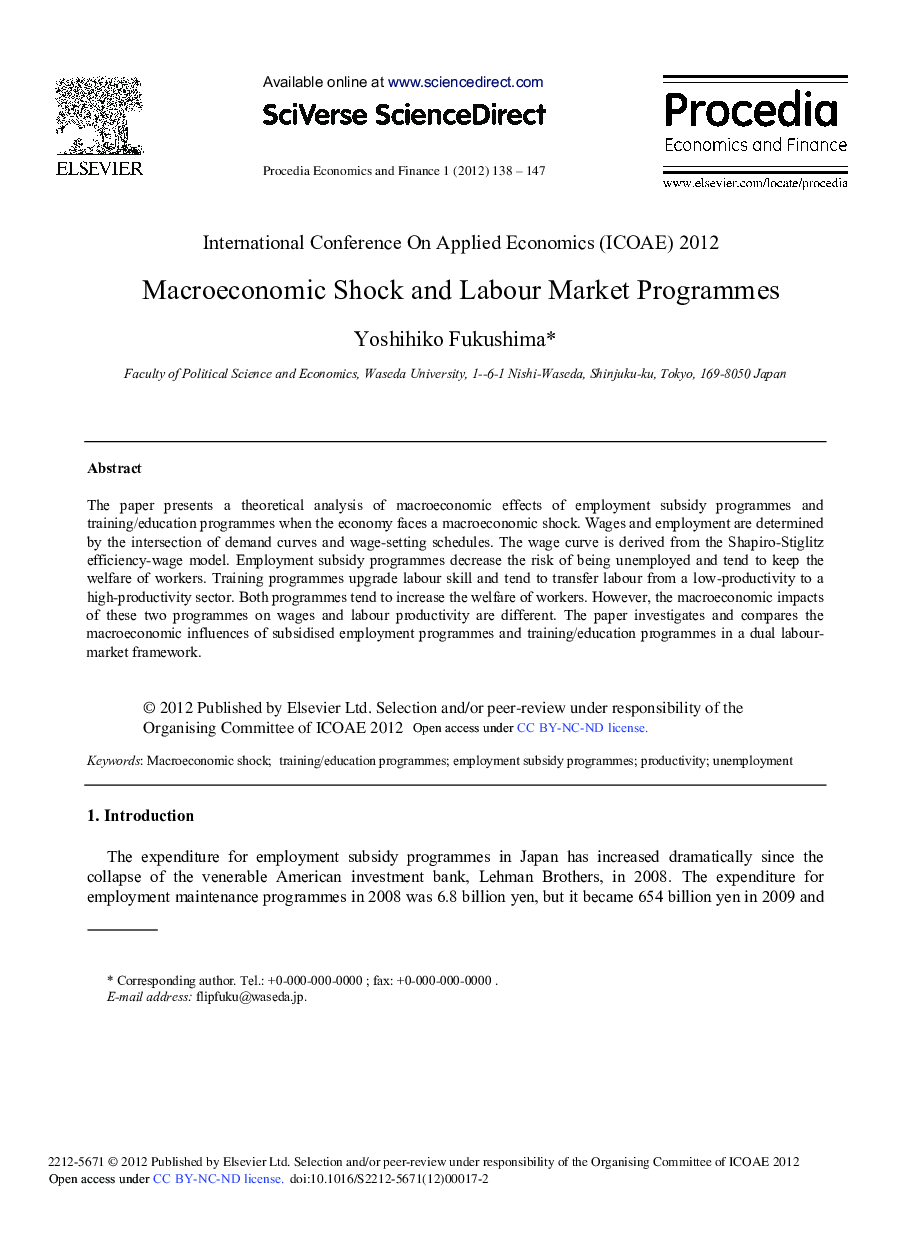| Article ID | Journal | Published Year | Pages | File Type |
|---|---|---|---|---|
| 980302 | Procedia Economics and Finance | 2012 | 10 Pages |
The paper presents a theoretical analysis of macroeconomic effects of employment subsidy programmes and training/education programmes when the economy faces a macroeconomic shock. Wages and employment are determined by the intersection of demand curves and wage-setting schedules. The wage curve is derived from the Shapiro-Stiglitz efficiency-wage model. Employment subsidy programmes decrease the risk of being unemployed and tend to keep the welfare of workers. Training programmes upgrade labour skill and tend to transfer labour from a low-productivity to a high-productivity sector. Both programmes tend to increase the welfare of workers. However, the macroeconomic impacts of these two programmes on wages and labour productivity are different. The paper investigates and compares the macroeconomic influences of subsidised employment programmes and training/education programmes in a dual labour-market framework.
